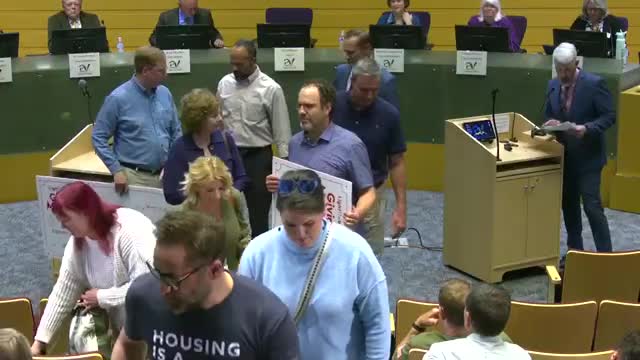Frank Sanderson outlines APS wildfire mitigation strategies for Prescott Valley
April 18, 2025 | Prescott Valley, Yavapai County, Arizona
Thanks to Scribe from Workplace AI , all articles about Arizona are free for you to enjoy throughout 2025!

This article was created by AI using a video recording of the meeting. It summarizes the key points discussed, but for full details and context, please refer to the video of the full meeting. Link to Full Meeting
Sanderson began by emphasizing APS's ongoing commitment to wildfire prevention in Prescott Valley and the surrounding areas. He outlined several key initiatives aimed at reducing fire risks, particularly through vegetation management. APS has been actively clearing rights-of-way to prevent vegetation from coming into contact with electrical infrastructure, a crucial step in fire prevention.
A notable strategy introduced by APS is the creation of defensible space around utility poles. This involves clearing a 10-foot radius of vegetation around structures that could emit sparks, thereby minimizing the risk of fire ignition. Sanderson highlighted the effectiveness of this approach, showcasing examples of areas treated post-fire.
In collaboration with the Forest Service, APS has also implemented a Hazard Tree Program. This initiative focuses on identifying and removing dead or dying trees that pose a threat to power lines, ensuring that storms do not compromise infrastructure.
Sanderson reported that APS has significantly increased its investment in fire mitigation infrastructure over the past decade. Of the 1,500 feeders or circuits operated by APS, 237 are located in high fire risk areas, predominantly in Northern Arizona. To further enhance safety, APS has introduced fire mesh wraps for wooden poles, which dissipate heat during fires, reducing the likelihood of pole damage.
Additionally, APS is replacing traditional fuses with non-spark emitting alternatives in fire-prone areas. Sanderson noted that while APS primarily uses steel poles, wood poles are still necessary in certain locations, and the fire mesh is used to protect these structures.
The meeting also addressed APS's proactive measures, including annual fire mitigation patrols on all fire mitigation feeders. These patrols identify and rectify potential hazards ahead of the May 1 fire season, which Sanderson acknowledged has become a year-round concern due to changing weather patterns. The introduction of drone patrols equipped with infrared technology was also mentioned, enhancing the ability to monitor power lines from above.
In conclusion, the council meeting underscored APS's comprehensive approach to fire safety and mitigation, highlighting the importance of ongoing efforts to protect the community and infrastructure from wildfire threats. The strategies discussed are part of a broader commitment to ensure safety in a region increasingly affected by fire risks.
Converted from Regular Town Council Meeting Thursday, March 27, 2025 meeting on April 18, 2025
Link to Full Meeting
Comments
View full meeting
This article is based on a recent meeting—watch the full video and explore the complete transcript for deeper insights into the discussion.
View full meeting
